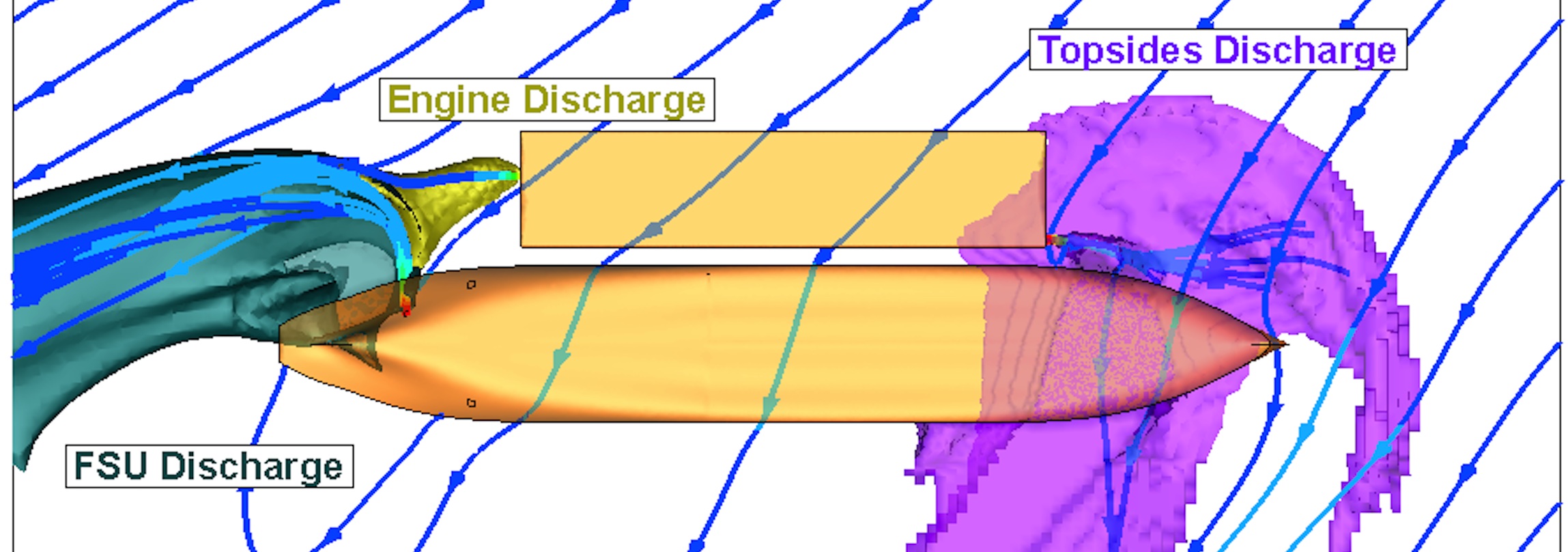AMOG provided assistance to Pacific Rubiales Energy (PRE) in their development of an LNG offloading jetty facility in Colombia. AMOG were tasked to characterise the discharge of process cooling water from the barge engine and LNG liquefaction cooling circuits in order to help PRE assess compliance with IFC guidelines, which mandated that the discharge should not result in a difference of seawater temperature greater than 3°C from ambient temperature at the edge of a 100m mixing zone”.
AMOG conducted Computational Fluid Dynamic (CFD) analyses for different FLSU configurations of the liquefaction system discharge outlet location (horizontal and vertical discharge near to the bow) operating under the nominal environmental conditions. Sensitivity scenarios were assessed to examine the effect of a negligible (slack) current and the impact of changing the process discharge velocity. For all cases, in terms of the plume thermal distribution, the 3°C above ambient condition region was within the 100m mixing zone.
The Scope of work included:
- Characterization of the plumes formation from the process topside and engine room discharge outlet pipes locations
- Quantification of plume thermal distribution in relation to greater than 3°C of ambient temperature variance at and beyond the 100m mixing zone edge boundaries
- Advice and recommendations for optimum discharge option and impact of environmental site data
- Review information on the ambient currents and waves upon the predicted results

